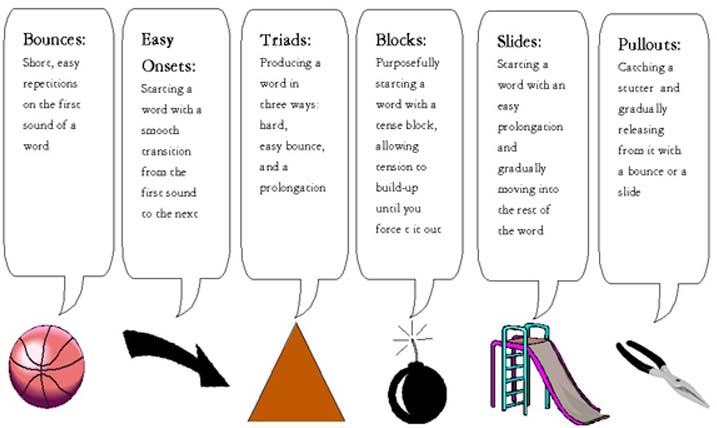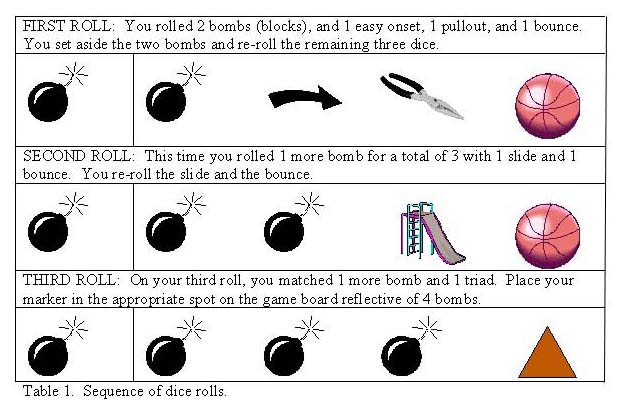Fluency Yahtzee
 |
About the presenter: Dr. Ellen Bennett is a board recognized fluency specialist with over 26 years of experience in the public schools, university, and private practice settings. She developed an integrated model of stuttering therapy called "The House that Jack Built" which appears featured in Dr. Bennett's new book Working with People Who Stutter: A Lifespan Approach (Prentice Hall, 2006). Dr. Bennett has devoted her career to developing creative therapy activities and programs for school-age children who stutter. |
Fluency Yahtzee: A Game of Choice
by Ellen Bennett
from Texas, USA
Therapy for school-age children and teens who stutter should be challenging, yet FUN. Activities which provide choice-making options for clients may enhance their intrinsic motivation, a necessary feature of therapeutic success. Bennett (2006) identified two ways to motivate clients: establish competence and provide for self-regulated learning through choice making. Fluency Yahtzee (Bennett 2005) is a game that incorporates these motivational concepts and is modeled after the traditional dice game of Yahtzee. Clients are provided multiple opportunities to practice various speech modification and desensitization strategies while playing a competitive, fun game. The following is a description of the game and how it is played.
Fluency Yahtzee
Objective:
Materials:
Procedure:
1. Each player takes 5 tokens of the same color. Put the 5 labeled dice into the dice cup. Put the scoreboard within easy reach of all players. The strategies used in this game include easy bounces (repetitions as voluntary stuttering), easy onsets (fluency shaping strategy), triads (desensitization practice), slides (prolongations used as voluntary stuttering), and pullouts (management of a moment of stuttering). Explanation of the symbols is below:

2. Select the first person to roll the dice. On the first roll, roll all 5 dice. Based on the symbols showing on the tops of the dice, the player decides what strategy he/she will practice. If you have dice that match, you could stop rolling now and score - or the player could continue to roll, hoping to score higher. For the second and third rolls, you may pick up any and all of the dice and roll them again. You can change which strategy you are trying to match at any time. You could score after your second roll, if you wish. If you decide to roll a third time, however, your dice are final and you must add up your turn's score. After three rolls of the dice, the player adds up the matching dice and marks the score by placing the matching token on the scoreboard. Then the player selects a word, phrase, or sentence to say implementing the selected speech modification strategy. This ends this player's turn. Table 1 provides an example of the three rolls.

3. Table 2 is what the scoreboard would look like after the first player's turn is over. Each person takes a turn rolling the dice. If upon the third roll, all the strategies you roll are already taken, you lose your turn. Two or more players can place their tokens on the same space on the scoreboard. The game ends when the one player has placed all tokens on the scoreboard.

Table 3 provides an example of the scoreboard at the end of the game. Players then total up their scores by adding the column numbers above each of their tokens. The player with the highest total wins!


